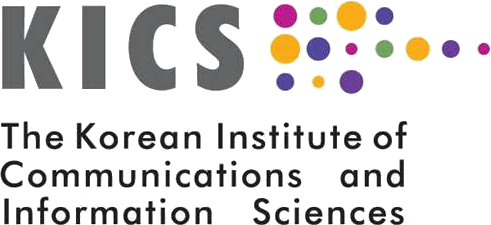Location: E2-3, Conference Room E, Coex
*All times are KST (GMT+9)
| Date / Time | Speaker | Title |
| Tuesday, May 17 9:00 – 10:30 |
Kyle Jamieson | Assessing the Feasibility of Programming the Ambient Wireless Environment |
| Saeed Khosravirad | Reflective intelligent surfaces: from accurate modeling to realistic implementation | |
| Linglong Dai | Active RIS vs. Passive RIS: Which Will Prevail in 6G? | |
| Lingyang Song | Reconfigurable Holographic Surfaces aided Wireless Communications | |
| Chau Yuen | AI-Assisted Reconfigurable Intelligent Surfaces (RIS) Wireless Networks | |
| Tuesday, May 17 11:00 – 12:30 |
Rui Zhang | Intelligent reflecting surface aided wireless networks: from single- reflection to multi-reflection design and optimization |
| Tie Jun Cui | Information Metasurfaces in Wireless Communications: From New System Architectures to Wireless Channel Control | |
| Mohamed-Slim Alouini | Optimal Design of Finite-Resolution Phase Shifters-Based Reconfigurable Intelligent Surfaces | |
| Marios Poulakis | Towards a More Intelligent RIS | |
| Alessio Zappone | Radio resource allocation techniques for efficient RIS-design | |
| Tuesday, May 17 14:00 – 15:30 |
Robert Schober | Modeling and Design of IRS for FSO Communication Systems |
| Arman Shojaeifard | Reconfigurable Intelligent Surfaces – State of play from ETSI ISG RIS | |
| Dinh‐Thuy Phan‐Huy | Electro-Magnetic Field Exposure Aware Radio Thanks To Reconfigurable Intelligent Surfaces and Backscatters | |
| Geoffroy Lerosey | Reconfigurable Intelligent Surfaces: from the physical concept | |
| Vincenzo Sciancalepore | The Internet of Surfaces – Self-Configuring Metasurfaces |
Organizer:
Marco Di Renzo, CNRS & Paris‐Saclay University, Paris, France
Email: marco.di‐renzo@universite‐paris‐saclay.fr
Scope and topics:
This is an invited Special Workshop that was solicited by the Workshops and General Chairs of IEEE ICC 2022. The main idea of this Special Workshop is to gather expert researchers (from academia an industry) to give presentations on their latest research works in this emerging field of research.
Rationale:
A Reconfigurable Intelligent Surface (RIS) is a planar structure that is engineered to have properties that enable the dynamic control of the electromagnetic waves. In wireless communications and networks, RISs are an emerging technology for realizing programmable and reconfigurable wireless propagation environments through nearly passive and tunable signal transformations. RIS‐assisted programmable wireless environments are a multidisciplinary research endeavor but are not well‐understood. This special workshop is aimed to lead to a widespread dissemination of state‐of‐the‐art analytical and algorithmic tools, testbed implementations and experimental activities, research perspectives, and to enable the acceleration in the germination of novel ideas pertaining to the development of RISs for various applications in wireless communications and networks. This special workshop will include presentations from world‐renowned experts in physics, electromagnetics, antennas and propagation, microwave theory and techniques, metamaterials, circuit design, devices, wireless communications, wireless networks, computer science, signal processing, localization and sensing, optimization theory, machine learning and data science, to provide a unified platform where modern state‐of‐the‐art research ideas and long‐term research directions are brought together.
Invited speakers (Title, Abstract, and Biography):
Mohamed-Slim Alouini (KAUST, Kingdom of Saudi Arabia)
Title: Optimal Design of Finite-Resolution Phase Shifters-Based Reconfigurable Intelligent Surfaces
Abstract: The idea of applying reconfigurable intelligent surface (RIS) in millimeter wave (mmWave) communications has been growing popularity for a while now. The additional connections provided by RIS can efficiently battle the coverage problems of mmWave communications caused by its severe propagation environment absorption and high directivity. However, most prior works investigated the use of continuous phase shift designs, which cannot be implemented in practice. In this talk, we present a new design of finite-resolution phase shifters that assists a point-to-point multiple-input single-output mmWave communication. Under the assumption that the mmWave propagation channel is characterized by sparse propagation paths, the proposed optimal algorithm is shown to retrieve the same solution as the exhaustive search method, yet with a polynomial complexity in the number of reflecting elements. In particular, the proposed design achieves a signal-to-noise ratio that increases quadratically with the number of reflecting elements, just as the continuously controllable phase shift control.
Bio: Mohamed-Slim Alouini was born in Tunis, Tunisia. He received the Ph.D. degree in Electrical Engineering from the California Institute of Technology (Caltech) in 1998. He served as a faculty member at the University of Minnesota then in the Texas A&M University at Qatar before joining in 2009 the King Abdullah University of Science and Technology (KAUST) where he is now a Distinguished Professor of Electrical and Computer Engineering. Prof. Alouini is a Fellow of the IEEE and of the OSA. He is currently particularly interested in addressing the technical challenges associated with the uneven distribution, access to, and use of information and communication technologies in far-flung, rural, low-density populations, low-income, and/or hard-to-reach areas.
Tie Jun Cui (Southeast University, China)
Title: Information Metasurfaces in Wireless Communications: From New System Architectures to Wireless Channel Control
Abstract: Information metasurfaces are described by digital elements 0 and 1 with the opposite electromagnetic (EM) responses (e.g. anti-phases), instead of by the effective medium parameters. By designing different coding states of the digital elements, the EM waves can be controlled by the information metasurfaces in the desired way. We have shown that, when digital coding metasurfaces are space-encoded, the spatial-wave fields and beams can be manipulated in programmable manner; when the digital metasurfaces are time-encoded, the frequency spectra of EM waves (e.g. harmonics and their power distributions) can be manipulated. With space-time coding, the digital metasurfaces can attain simultaneous manipulations of EM waves in both spatial and frequency domains. The information metasurfaces set up a bridge between the physical world and digital world, and hence could produce new information systems. As relevant applications, I report novel architectures of wireless communication systems based on the information metasurface, including BFSK, QPSK, 8PSK, 16QAM, 256 QAM, and space-frequency mixed multiplexing schemes. In the new architectures, the traditional modules of analog-digital converter, mixers, filters, and amplifiers are no longer needed. On the other hand, the capability of ultrafast switching and scanning of spatial beams of the information metasurfaces make it possible to engineer the wireless channels. Hence the information metasurfaces will have more impacts to the future wireless communication systems.
Bio: Tie Jun Cui is the Chief Professor of Southeast University, Nanjing, China. He proposed the concepts of digital coding and programmable metamaterials and realized their first prototypes, based on which he further proposed information metamaterials to bridge the physical world and digital world, and developed the new architecture information systems. Dr. Cui has published over 500 peer-review journal papers, which have been cited by more than 41000 times (H-Factor 102), and licensed over 100 patents. Dr. Cui received the Natural Science Award (first class) from the Ministry of Education, China, in 2011, the National Natural Science Awards of China (second class, twice), in 2014 and 2018, and the Highly Cited Researcher Awards from Web of Science (top 1%), in 2019-2021, respectively. His researches have been widely reported by Nature News, MIT Technology Review, Scientific American, Discover, New Scientists, etc. Dr. Cui is the Academician of Chinese Academy of Science and IEEE Fellow. He served as Associate Editor of IEEE Transactions on Geoscience and Remote Sensing, and Guest Editors of Science China - Information Sciences, Science Bulletin, IEEE JETCAS, and Research. Currently he is the Chief Editor of Metamaterial Short Books in Cambridge University Press, the Associate Editor of Research, and the Editorial Board Members of eLight, PhotoniX, Advanced Optical Materials, Small Structure, and Advanced Photonics Research. He presented more than 100 Keynote and Plenary Talks in Academic Conferences, Symposiums, or Workshops.
Linglong Dai (Tsinghua University, China)
Title: Active RIS vs. Passive RIS: Which Will Prevail in 6G?
Abstract: From 1G to 5G wireless communications, wireless channels have been usually regarded as uncontrollable, and the communication quality heavily depends on the surrounding environment. With the rapid development of metamaterials, reconfigurable intelligent surfaces (RISs) have emerged as a candidate technology for future 6G networks by controlling the propagation of electromagnetic waves. The existing passive RISs can transform the natural channels into programmable channels to play a positive role in wireless signal propagations, which is expected to improve the capacity in wireless networks. However, due to the “multiplicative fading” effect of RISs, i.e., the equivalent path loss of the transmitter-RIS-receiver link is the product (instead of the sum) of the path losses of the transmitter-RIS link and RIS-receiver link, the existing passive RISs can only achieve a negligible capacity gain in many scenarios with strong direct links. In this talk, the new concept of active RISs will be discussed to overcome this fundamental limitation. Unlike the existing passive RISs that reflect signals without amplification, active RISs can amplify the reflected signals by integrating active power amplifiers into RIS elements. Accordingly, a new signal model for active RIS will be developed to characterize the amplification of the incident signal as well as the non-negligible thermal noise introduced by the active RIS elements. This new signal model for active RIS will be validated through experimental measurements based on a fabricated active RIS. Then, based on this signal model, we formulate the sum-rate maximization problem for active RIS aided multiple-input multiple-output (MIMO) systems, and a precoding algorithm is proposed to solve this problem. Finally, we show that, in a typical wireless system, the existing passive RISs can realize only a negligible sum-rate gain of 3%, while the proposed active RISs can achieve a significant sum-rate gain of 108%, thus overcoming the multiplicative fading effect.
Bio: Linglong Dai (M’11-SM’14-F’22) is currently an Associate Professor of the Department of Electronic Engineering, Tsinghua University, China. His current research interests include 5G/6G wireless communication technologies (RIS, massive MIMO, millimeter-wave/Terahertz communications, non-orthogonal multiple access, etc.) and machine learning for future wireless communications. He has published over 70 IEEE journal papers and over 40 IEEE conference papers. He has received 5 IEEE conference Best Paper Awards. He has also received the Tsinghua University Outstanding Ph.D. Graduate Award in 2011, the Beijing Excellent Doctoral Dissertation Award in 2012, the National Excellent Doctoral Dissertation Nomination Award in 2013, the URSI Young Scientist Award in 2014, the IEEE Transactions on Broadcasting Best Paper Award in 2015, the Electronics Letters Best Paper Award in 2016, the National Natural Science Foundation of China for Outstanding Young Scholars in 2017, the IEEE ComSoc Asia-Pacific Outstanding Young Researcher Award in 2017, the 7th IEEE ComSoc Asia-Pacific Outstanding Paper Award in 2018, the China Communications Best Paper Award in 2019, the IEEE Access Best Multimedia Award in 2020, and the IEEE ComSoc Leonard G. Abraham Prize in 2020. He was listed as a Highly Cited Researcher by Clarivate in 2020 and 2021. He was elevated as an IEEE Fellow in 2021.
Kyle Jamieson (Princeton, USA)
Title: Assessing the Feasibility of Programming the Ambient Wireless Environment
Abstract: The traditional approach to optimizing wireless networks revolves around the wireless endpoints, i.e., the transmitters and the receivers, and takes the wireless channel as a hard constraint, invoking a multitude of solutions to fully utilize that channel. We focus on whether it is feasible to optimize the ambient wireless environment. Instead of changing the ways in which endpoints behave, we will discuss ways of changing the perceived channel along the wireless link to create more favorable conditions for wireless communication. Specifically, we will explore how to instrument the wireless environment with small wireless elements to effect changes in the wireless channel that a wireless receiver measures from a wireless sender. A substrate comprising these elements is then combined with a control infrastructure that measures the channels between wireless senders and receivers in real time, and actuates the element substrate in order to effect channel variations.
Bio: Kyle Jamieson is a Professor in the Department of Computer Science at Princeton University, where he has been on the faculty since 2015, after seven years on the faculty at University College London, U.K. Jamieson leads the Princeton Advanced Wireless Systems (PAWS) Group, whose charter is to build and experimentally evaluate wireless networking and wireless sensing systems for the real world that cut across the boundaries of digital communications, signal processing, and computer networking. He received the B.S. (2001), M.Eng. (2002), and Ph.D. (2008) degrees in Computer Science from the Massachusetts Institute of Technology. He then received a Starting Investigator fellowship from the European Research Council in 2011, Best Paper awards at USENIX 2013 and CoNEXT 2014, a Google Faculty Research Award in 2015, and the ACM SIGMOBILE Early Career Award in 2018.
Saeed Khosravirad (Nokia Bell Labs, USA)
Title: Reflective intelligent surfaces: from accurate modeling to realistic implementation
Abstract: Reconfigurable intelligent surfaces (RIS) are becoming key components of beyond 5G systems. RIS have been made possible by the recent advent of electromagnetic components that can interact and shape radio waves in a controllable way. Such materials enable the design of a configurable propagation environment. The design of algorithms to control RIS is challenging by the latency requirements due to the need for reconfiguration in real-time, the overhead of channel estimation due to the large number of reflective elements that compose the RIS and antennas at the base stations/user device, and the constraints on the RIS hardware. This talk will address how deep neural networks can be used to, among other purposes, reduce the overhead of channel estimation.
Bio: Saeed R. Khosravirad (Nokia Bell Labs, USA) is a Member of Technical Staff at Nokia Bell Labs. In this role, he contributes to innovating the future generation of wireless networks with ultrareliable and low latency communications technology to enable the wireless industrial revolution. He received his Ph.D. degree in telecommunications in 2015 from McGill University, Canada. Prior to that, he received the B.Sc. degree from the department of Electrical and Computer Engineering, University of Tehran, Iran, and the M.Sc. degree from the department of Electrical Engineering, Sharif University of Technology, Iran. He is currently leading research projects in Bell Labs investigating various aspects of radio access for industrial IoT. During 2018-2019, he was with the Electrical & Computer Engineering department of University of Toronto, Canada as a Visiting Scholar. He is an editor of the IEEE Transactions on Wireless Communications, and guest editor of the IEEE Wireless Communications magazine. His research fields of interest include wireless communications theory, cellular network technologies, and radio resource management for 5G and beyond.
Geoffroy Lerosey (Greenerwave, France)
Title: Reconfigurable Intelligent Surfaces: from the physical concept
Abstract: In this talk we will show how, starting from the field of waves in complex media in acoustics and RF, we learned how to control the propagation of light through very scattering media using smart reconfigurable reflectors, namely spatial light modulators. We will explain how this has led us, 8 years ago, to propose to use tunable metasurfaces as smart reflectors to enhance wireless communications. We will show the first results obtained and published in 2014, that proved how a small tunable metasurface placed in an office room can multiply by 10 the energy transmitted between 2 antennas. We will propose a basic application to wireless communications in the context of WIFI, obtained by the company years ago, thus showing the first use of a RIS in a communication system. Then, we will underline what we believe is important to have in mind in terms of wave control versus RIS complexity, notably when it comes to practical applications. We will show a few examples of RIS developed at Greenerwave, from 1GHz to 77GHz, and briefly describe their applications. Finally, we will discuss our vision of RIS for the future of wireless communications. To that end, we will first propose the concept of passive mmWave access point extender, a RIS used as a smart dynamically tunable reflector used to extend the coverage of base stations. In this context we will demonstrate non line of sight mmWave data transmission using low complexity and low consumption tunable metasurfaces. In addition, we will discuss the use of RIS at sub-6GHz and propose a way to make them commercially possible and energetically viable. This relies on wirelessly controlled and powered, distributed unit cells, that harness energy from RF waves, are controlled by them and in turns control them. We will show results of this idea in the context of RFID.
Bio: Geoffroy Lerosey is the co-founder and the inventor of the concepts behind Greenerwave with Mathias Fink. He is on leave from academia to fully support the company’s development and bring his scientific expertise. Geoffroy earned an engineering degree from ESPCI Paris, a Master’s degree in electronics from Université Pierre et Marie Curie and a PhD in Physics from Université Paris Diderot. He joined University of California at Berkeley for Postdoctoral researches working mainly on metamaterials and plasmonics. Coming back to France, Geoffroy was appointed by French main academic research organization CNRS in 2008 and started a group at Institut Langevin (CNRS & ESPCI Paris). Geoffroy’s researches are in metamaterials and metasurfaces, time reversal and signal processing, subwavelength imaging and focusing techniques, wavefront shaping in optics and RF, photonic and phononic crystals, reverberating and locally resonant media, and span all domains of wave physics from acoustics to optics. Geoffroy has been invited more than 80 times at international conferences and has given invited seminars in many universities worldwide. He supervised 10 PhD students, 6 postdocs and 20 Master students. His research led 100 scientific articles, 15 patents and 2 startups.
Dinh‐Thuy Phan‐Huy (Orange Innovation, France)
Title: Electro-Magnetic Field Exposure Aware Radio Thanks To Reconfigurable Intelligent Surfaces and Backscatters
Abstract: To support the continuous growth of the Internet traffic, each new generation of mobile network (3G, 4G, 5G) is improved with respect to the previous generation, in terms of spectral efficiency, capacity and energy efficiency. However, each new generation also adds its own cost in terms of spectrum and energy consumption to the costs of all previous already deployed ones. Moreover, it adds its own contribution to the overall Electro-Magnetic Field (EMF) exposure. In most countries, national regulators define the EMF limits based upon the guidelines published by the International Commission on Non-Ionizing Radiation Protection (ICNIRP). However, some countries or cities have adopted more stringent limits; sometimes ten times lower than the ICNIRP guidelines. 6G, currently still at Research stage, has the opportunity to be the first generation to take into account EMF exposure in its design. We believe it is now the right time to start exploring disruptive approaches for transmitting more with EMF exposure awareness. In this talk, we explore two promising new types of devices that do not generate any additional wave: Reconfigurable Intelligent Surfaces and Ambient Backscatters. Reconfigurable Intelligent Surfaces improve the link budget of on-going communications by performing reflected beamforming, whereas Ambient backscatters send messages by backscattering ambient waves from on-going communications. We will provide first insights on use cases, deployment aspects, performance evaluation studies and experiments.
Bio: Dr. Dinh-Thuy PHAN HUY is currently a research project manager in Orange Innovation/Networks entity. She received the degree in engineering from Supelec, in 2001, and the Ph.D. degree in electronics and telecommunications from the National Institute of Applied Sciences of Rennes, France, in 2015. In 2001, she joined France Telecom R&D (now Orange Innovation), Châtillon, France. She led the national French collaborative research projects TRIMARAN (2011-2014) and SpatialModulation (2016-2019). She participated to the following 5G PPP projects: METIS, Fantastic 5G, mmMAGIC and 5GCAR. She is co-inventor of more than 40 patents and the co-author of more than 40 papers. She is the recipient of several awards in France: “Prix Impact Economique des Rencontres du Numérique 2016” from the French National Research Agency, “Grand Prix de l’Electronique du General Ferrié 2018” from the French Society of Electricity, Electronics and Information and Communication Technologies and the “Prix Irène Joliot Curie 2018 – catégorie Femme-Recherche-Entreprise” from the French Ministry of Education and Research. Her research interests include wireless communications and beamforming, time reversal, spatial modulation, backscattering and intelligent reconfigurable surfaces. She is involved in the EU Flagship project on 6G Hexa-x and leads the work package on sustainability and security in RISE-6G EU project on reconfigurable intelligent surfaces for 6G.
Marios Poulakis (Huawei Sweden, Sweden)
Title: “Towards a More Intelligent RIS”
Abstract: Reconfigurable Intelligent Surface (RIS) constitutes an emerging technology that is expected to play an important role in future wireless networks by intentionally and cleverly controlling the wireless propagation environment in order to boost the signal quality at the receiver in a cost-effective manner. RIS is a reconfigurable surface (i.e. a 2D array whose properties can be changed) comprising configurable electromagnetic materials that can be controlled and programmed in real-time. The benefits of RIS are becoming clearer in practice, nevertheless, considering that the controllability is relying entirely on the Base Station feedback, how intelligent is actually a RIS? This presentation will provide an assessment of RIS performance in 5G networks in terms of coverage and spectral efficiency, while a quest for the missing intelligence in the design and implementation of RIS will be introduced. Artificial Intelligence (AI) / Machine Learning (ML) has been recognized as a key enabler for more intelligent solutions, thus the investigation of how AI/ML could be integrated in RIS in order to emphasize the “I” in RIS, and what the potential problems that it could address are, will be discussed. The objective is to try to alleviate the massive configuration control overhead from the Base Station, towards a more autonomous and self-adaptive design, taking into account the power and computation requirements of RIS.
Bio: Dr.Eng. Marios I. Poulakis received his diploma in Electrical and Computer Engineering from the National Technical University of Athens (NTUA), Greece, and his M.Sc. degree in Management and Economics of Telecommunication Networks from the National and Kapodistrian University of Athens, Greece, in 2006 and 2008, respectively. In 2014, he received the Dr.Eng. degree from the NTUA. In 2007, he joined the Mobile Radio Communications Laboratory, NTUA, as an associate researcher and project engineer, participating in various industry and research-oriented projects in the telecommunications sector. From April 2016 to September 2017, M. Poulakis has been a post-doctoral researcher at the Department of Digital Systems, University of Piraeus, Greece. In addition, from April 2016 to October 2018, M. Poulakis has been an R&D Engineer at Feron Technologies P.C. Since November 2018, he has been a Technology Planning Engineer (Wireless and AI Expert) at Huawei Technologies, Sweden. His main research interests include wireless and satellite communications with emphasis on optimization mechanisms, machine learning and algorithm design. He has published more than 25 papers in international journals, conference proceedings and book chapters, while he has been a reviewer for international journals. He is a Member of the IEEE.
Robert Schober (FAU, Germany)
Title: Modeling and Design of IRS for FSO Communication Systems
Abstract: Intelligent reflecting surfaces (IRSs) have the potential to transform both wireless radio frequency (RF) and free-space optics (FSO) communication channels into smart reconfigurable propagation environments. While the RF case has been heavily researched in recent years, optical IRS have received much less attention despite their potential to mitigate the inhibiting line-of-sight constraint of FSO systems. FSO systems are able to offer the high data-rate, secure, and cost-efficient communication links required for applications such as wireless front- and backhauling for 5G and 6G communication networks. Despite the substantial advancement of FSO systems over the past decades, the requirement of a line-of-sight connection between transmitter and receiver remains a key limiting factor for their deployment. In this presentation, we present an overview of existing optical IRS technologies, compare optical with RF IRSs, develop models for the end-to-end FSO channel, and compare optical IRS and optical relays. Finally, promising directions for future research on IRS-assisted FSO systems are provided.
Bio: Robert Schober (S'98, M'01, SM'08, F'10) received the Diplom (Univ.) and the Ph.D. degrees in electrical engineering from Friedrich-Alexander University of Erlangen-Nuremberg (FAU), Germany, in 1997 and 2000, respectively. From 2002 to 2011, he was a Professor and Canada Research Chair at the University of British Columbia (UBC), Vancouver, Canada. Since January 2012 he is an Alexander von Humboldt Professor and the Chair for Digital Communication at FAU. His research interests fall into the broad areas of Communication Theory, Wireless and Molecular Communications, and Statistical Signal Processing. Robert received several awards for his work including the 2002 Heinz Maier Leibnitz Award of the German Science Foundation (DFG), the 2004 Innovations Award of the Vodafone Foundation for Research in Mobile Communications, a 2006 UBC Killam Research Prize, a 2007 Wilhelm Friedrich Bessel Research Award of the Alexander von Humboldt Foundation, the 2008 Charles McDowell Award for Excellence in Research from UBC, a 2011 Alexander von Humboldt Professorship, a 2012 NSERC E.W.R. Stacie Fellowship, and a 2017 Wireless Communications Recognition Award by the IEEE Wireless Communications Technical Committee. Since 2017, he has been listed as a Highly Cited Researcher by the Web of Science. Robert is a Fellow of the Canadian Academy of Engineering, a Fellow of the Engineering Institute of Canada, and a Member of the German National Academy of Science and Engineering. From 2012 to 2015, he served as Editor-in-Chief of the IEEE Transactions on Communications. Currently, he serves as Member of the Editorial Board of the Proceedings of the IEEE and as VP Publications for the IEEE Communication Society (ComSoc).
Vincenzo Sciancalepore (NEC, Germany)
Title: The Internet of Surfaces – Self-Configuring Metasurfaces
Abstract: Reconfigurable Intelligent Surfaces (RISs) are considered one of the key disruptive technologies towards future 6G networks. RISs revolutionize the traditional wireless communication paradigm by controlling the wave propagation properties of the impinging signals as required. A major roadblock for RIS is though the need for a fast and complex control channel to continuously adapt to the ever-changing wireless channel conditions. In this paper, we ask ourselves the question: Would it be feasible to remove the need for control channels for RISs? We analyze the feasibility of devising Self-Configuring Smart Surfaces that can be easily and seamlessly installed throughout the environment, following the new Internet-of-Surfaces (IoS) paradigm, without requiring modifications of the deployed mobile network. To this aim, we design MARISA, a self-configuring metasurfaces absorption and reflection solution, and show that it can achieve a better-than-expected performance rivaling with control channel-driven RISs.
Bio: Vincenzo Sciancalepore is a Principal Researcher at NEC Laboratories Europe GmbH, Germany. He is currently focusing his activity in the area of network virtualization, network slicing and edge computing. He is the standard delegate of NEC actively contributing to the standard ETSI MEC (Multi-Access Edge Computing) ISG. He is currently member of the IEEE Emerging Technologies Standing Committee (ETC) leading the initiatives on Software Defined Networking & Network Function Virtualization as well as in the IEEE Mobile Communication Networks Standards Committee (IEEE MobiNet-SC). He currently holds the italian habilitation as associate professor in telecommunications issued by MIUR. He has been involved in a number of European Projects and several published international Research Papers as well as Patents. Currently, he is actively leading a work package in a H2020-fundeed project called 5G-CARMEN that will analyze and deploy 5G technologies along selected stretches of the motorway between Italy, Austria and Germany to improve the mobility of people and goods throughout Europe. He is also member of IEEE ComSoc (S’11-M’15-SM’19). He received his M.Sc. degree in Telecommunications Engineering and Telematics Engineering in 2011 and 2012, respectively, whereas in 2015, he received a double Ph.D. degree from Politecnico di Milano and Universidad Carlos III de Madrid. From 2011 to 2015 he was Research Assistant at IMDEA Networks, focusing on inter-cell coordinated scheduling for LTE Advanced networks and device-to-device communication. He was also the recipient of the national award for the best Ph.D. thesis in the area of communication technologies (Wireless and Networking) issued by GTTI in 2015.
Arman Shojaeifard (Interdigital, UK)
Title: Reconfigurable Intelligent Surfaces – State of play from ETSI ISG RIS
Abstract: A new Industry Specification Group (ISG) on Reconfigurable Intelligent Surfaces (ISG RIS) has recently launched at ETSI, with a mission to review and establish global standardization for RIS technology. This talk provides an introduction to the ETSI ISG RIS, including scope, activities, and progress to date within the group.
Bio: Dr Arman Shojaeifard has +9 years of post-PhD experience in research, development, and standardization of radio transmission technologies and architectures. He is currently a Senior R&I Manager at InterDigital Europe where he serves as the Chair of the ETSI Industry Specification Group on Reconfigurable Intelligent Surfaces (ISG RIS) and the Technical Manager of the Innovate-UK/CELTIC-NEXT European collaborative R&D project on AIMM (AI-enabled Massive MIMO). Prior to InterDigital, he was a Senior Researcher and 3GPP RAN1 WG Delegate at British Telecommunications plc. He received his PhD degree in Wireless Communications from King’s College London in 2013.
Lingyang Song (Peking University, China)
Title: Reconfigurable Holographic Surfaces aided Wireless Communications
Abstract: The future sixth generation wireless communications look forward to constructing a ubiquitous intelligent information network with high data rates. To fulfill such challenging visions, the reconfigurable holographic surface (RHS) is developed as a promising solution due to its capability of accurate multi-beam steering with low power consumption and hardware cost. Different from the conventional phase-controlled antennas, the RHS can control the radiation amplitude of the reference wave propagating on the metasurface by leveraging the holographic technique. Such amplitude-controlled holographic beamforming triggers new challenges since a new beamforming scheme needs to be developed to handle the complex-domain optimization problem subject to the unconventional real-domain amplitude constraints. Both analytical and simulation results verify the significant data rate improvement of the proposed scheme.
Bio: Lingyang Song received his BS from Jilin University, China, in 2002, and Ph.D. from the University of York, UK, in 2006, where he received the K. M. Stott Prize for excellent research. He worked as a research fellow at the University of Oslo, Norway until rejoining Philips Research UK in March 2008 as a senior research scientist for 3GPP RAN Standardization. In May 2009, he joined the School of Electronics Engineering and Computer Science, Peking University, and is now a Boya Distinguished Professor. He is the co-author of a number of best paper awards, including IEEE Communications Society Leonard G. Abraham Prize in 2016, IEEE Communications Society Heinrich Hertz Award in 2021. He has served as a Distinguished Lecturer of IEEE Communications Society, an Area Editor of IEEE Transactions on Vehicular Technology. He is a Fellow of IEEE.
Chau Yuen (SUTD, Singapore)
Title: AI-Assisted Reconfigurable Intelligent Surfaces (RIS) Wireless Networks
Abstract: In this talk, we will present some recent results on the reconfigurable intelligent surfaces (RIS) wireless network empowered by AI, in particular a deep-learning-based hybrid beamforming for RIS-empowered multi-hop teraherz communications, intelligent spectrum learning with RIS, and AI-assisted MAC. Such AI-based solution is particular of important when the network involves multiple users, as the signals impinging upon an RIS can be contaminated by interfering signals which are usually dynamic and unknown. To address this issue, ‘learning’ the properties of the surrounding spectral environment is a promising solution. Motivated by the convergence of artificial intelligence and spectrum sensing, we termed here as spectrum learning, where the RIS controller becomes capable of intelligently ‘think-and-decide’ whether to reflect or not the incident signals.
Bio: Chau Yuen received the B.Eng. and Ph.D. degrees from Nanyang Technological University (NTU), Singapore, in 2000 and 2004, respectively. He was a Post-Doctoral Fellow with Lucent Technologies Bell Labs, Murray Hill, in 2005. From 2006 to 2010, he was with the Institute for Infocomm Research (I2R). Since 2010, he has been with the Singapore University of Technology and Design. He received the IEEE Marconi Prize Paper Award in Wireless Communications 2021, IEEE Asia-Pacific Outstanding Young Researcher Award in 2012, and the IEEE VTS Singapore Chapter Outstanding Service Award in 2019. He serves as an Editor for the IEEE TRANSACTIONS ON COMMUNICATIONS and the IEEE TRANSACTIONS ON VEHICULAR TECHNOLOGY. He is a Distinguished Lecturer of the IEEE Vehicular Technology Society and IEEE Fellow.
Alessio Zappone (University of Cassino, Italy)
Title: Radio resource allocation techniques for efficient RIS-design
Abstract: The talk will introduce the main optimization techniques that have appeared for the optimization of RIS-based wireless networks. The new optimization challenges posed by the use of RISs will be identified, and a thorough literature survey about resource allocation for RIS-based wireless networks design will be given. Namely, the fact that the RIS is a (nearly) passive device without neither a dedicated transmit and receive hardware, nor a digital signal processor, results in more challenging resource allocation problems to solve and more sophisticated channel estimation and feedback protocols, which poses additional constraints on the resource allocation algorithms, and leads to the need of performing overhead-aware resource allocation, unlike what typically happens for the design of present wireless communication systems. A model that accounts for the overhead associated to the computation and configuration of the optimal RIS phase matrix will be described and applied for the maximization of the rate, energy efficiency, and their trade-off in MIMO RIS-based wireless networks.
Bio: Prof. Alessio Zappone obtained his Ph.D. degree in electrical and information engineering in 2011 from the University of Cassino and Southern Lazio, Cassino, Italy. His Ph.D. studies were focused on distributed algorithms for energy-efficient resource allocation in wireless networks. After obtaining his Ph.D. Alessio has been with the Technische Universitaet Dresden, Germany, managing the project CEMRIN on energy-efficient resource allocation in wireless networks, funded by the German Research Foundation. From 2017 to 2019 he has been the recipient of the H2020 Individual Marie Curie fellowship for experienced researchers BESMART, carried out in the LANEAS group of CentraleSupelec, Paris, France. He is now a tenured professor at the university of Cassino and Southern Lazio, Italy. He received the Marconi Prize paper award of the IEEE com- munication society with a paper on resource allocation for RIS-based networks. He was appointed exemplary reviewer for the IEEE TRANSACTIONS ON COMMUNICATIONS and IEEE TRANSACTIONS ON WIRELESS COMMUNICATIONS several times. Alessio is an IEEE Senior Member, serves as senior area editor for the IEEE SIGNAL PROCESSING LETTERS, as expert editor for the IEEE Communication Letters, and has served as guest editor for the IEEE JOURNAL ON SELECTED AREAS ON COMMUNICATIONS (Special Issues on Energy-Efficient Techniques for 5G Wireless Communication Systems and on Wireless Networks Empowered by RIS). Alessio is a co-founder and chair of the special interest group “REFLECTIONS”, activated within the Signal Processing and Computing for Communications Technical Committee of the IEEE Communications Society, which focuses on the use of RIS for signal processing and communications. He is also a co-founder and vice-chair of the IEEE emerging technology initiative (ETI) on RIS, activated by the IEEE communication society.
Rui Zhang (NUS, Singapore)
Title: Intelligent reflecting surface aided wireless networks: from single-reflection to multi-reflection design and optimization
Abstract: Intelligent reflecting surface (IRS) has emerged as a promising technique for future wireless communications. Despite the vast literature on assorted IRS-aided wireless systems, prior works have mainly focused on enhancing wireless links with single signal reflection only by one or multiple IRSs, which may be insufficient to achieve the full potential of IRS-enabled smart radio environment. In this talk, we introduce a new research paradigm by employing two or more IRSs to assist each wireless link and jointly exploiting their single as well as multiple signal reflections over them. However, the resultant double-/multi-IRS aided wireless systems face more complex design issues as well as new practical challenges for implementation as compared to the conventional single-IRS counterpart, in terms of IRS reflection optimization, channel acquisition, as well as IRS deployment and association/selection. In this talk, we provide an overview of multi-IRS aided wireless networks, with an emphasis on addressing the new challenges due to multi-IRS signal reflection and routing. Moreover, we point out important directions worthy of further investigation in the future.
Bio: Dr. Rui Zhang (Fellow of IEEE, Fellow of the Academy of Engineering Singapore) received the Ph.D. degree from Stanford University in electrical engineering. He is now a Provost’s Chair Professor in the Department of Electrical and Computer Engineering, National University of Singapore. His current research interests include wireless information and power transfer, UAV/satellite communication, and reconfigurable MIMO. He has published over 450 papers, which have been cited more than 53,000 times with the h-index over 115. He has been listed as a Highly Cited Researcher by Thomson Reuters / Clarivate Analytics since 2015. He was the recipient of the IEEE Communications Society Asia-Pacific Region Best Young Researcher Award in 2011, the Young Researcher Award of National University of Singapore in 2015, the Wireless Communications Technical Committee Recognition Award in 2020, and the IEEE Signal Processing and Computing for Communications (SPCC) Technical Recognition Award in 2021. He received 11 IEEE Best Paper Awards, including the IEEE Marconi Prize Paper Award in Wireless Communications (twice), the IEEE Communications Society Heinrich Hertz Prize Paper Award (twice), the IEEE Communications Society Stephen O. Rice Prize, the IEEE Signal Processing Society Best Paper Award and Donald G. Fink Overview Paper Award, etc. He has served as an Editor for several IEEE journals, including TWC, TCOM, JSAC, TSP, TGCN, etc., and as TPC co-chair or organizing committee member for over 30 international conferences. He served as an IEEE Distinguished Lecturer of IEEE Communications Society and IEEE Signal Processing Society in 2019-2020.
Duration (tentative):
The Special Workshop will be scheduled according to the plan already made by the General Chairs, as reported in the following table (SW 1).



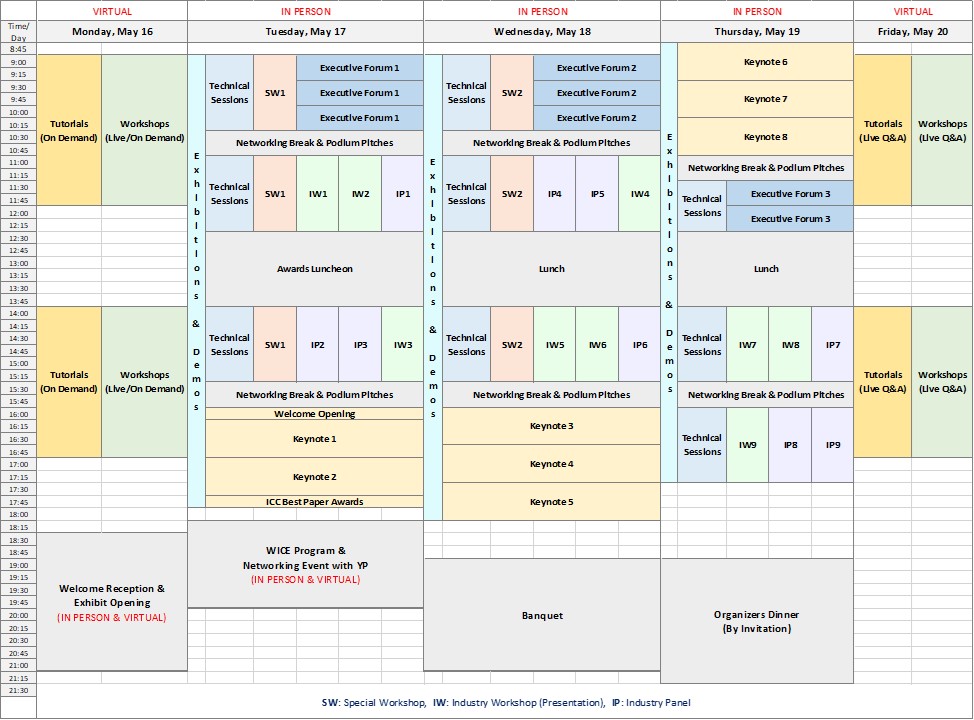



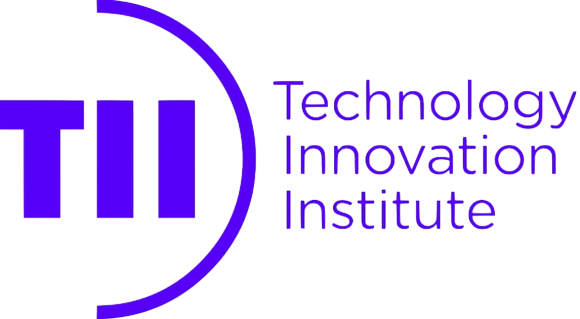
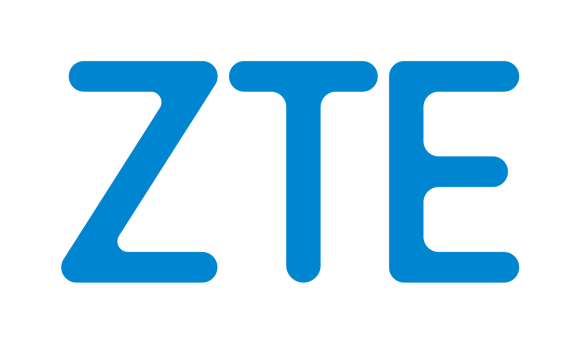
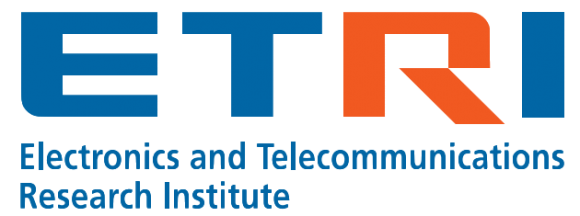
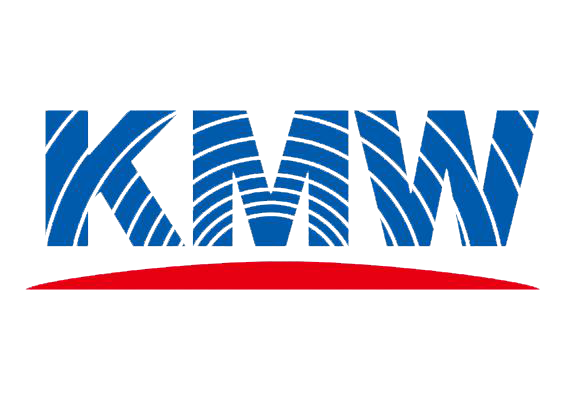

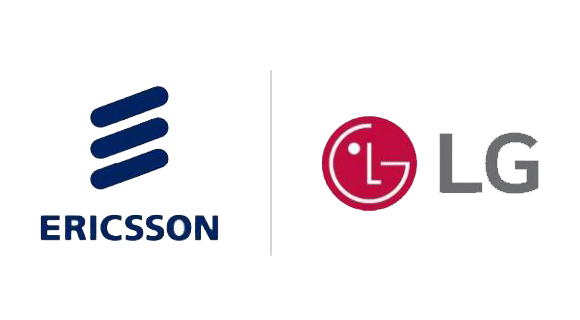


_01.png%3Fitok=vyvEGhfM)




.png%3Fitok=Yj8Y43po)
